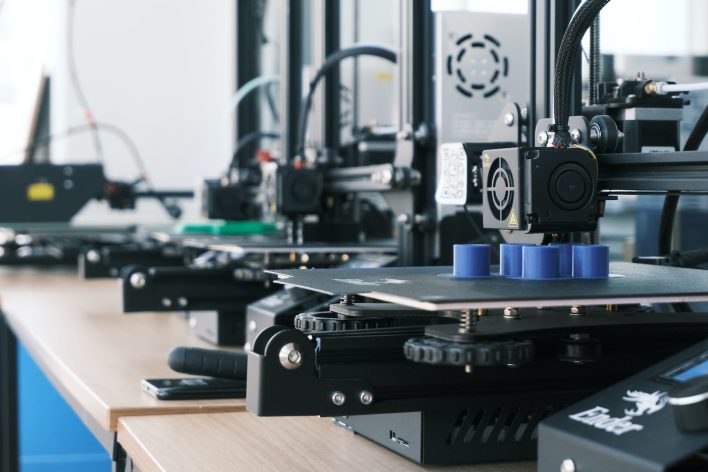
A Neural Network for Machine Translation, at the Production Scale, is a powerful technology that has the potential to revolutionize the way people interact with language. This technology makes it possible for machines to accurately translate written text from one language to another, without needing human intervention. The resulting translations are more accurate than ever before and can be used in a variety of applications ranging from customer support to medical translations. With the use of this technology, businesses can increase their global reach and better serve their customers. The Neural Network for Machine Translation at Production Scale also has the potential to reduce costs associated with manual translations by eliminating the need for additional personnel or resources. This technology offers a fast, efficient, and cost-effective approach to language translation that can be easily scaled up or down depending on need. By harnessing the power of this technology, businesses can bridge the language barrier and open up new markets and opportunities.
Leveraging Neural Networks for Machine Translation at Production Scale
Neural networks are revolutionizing the way machine translation is done at the production scale, thanks to their vast capabilities for handling a variety of language tasks. Neural networks are important for providing accurate translations and preserving the meaning of a source text in another language, even if no direct equivalent exists. This has enabled several applications such as medical document translation, localization of corporate websites, and automatic customer service.
Neural networks can solve the challenge of producing accurate machine translation service by using deep learning techniques such as recurrent neural networks (RNNs) and encoder-decoder models. These models use large amounts of data to learn patterns between languages and generate high-quality translations. Neural networks are also able to capture the nuances of natural languages, such as idioms and colloquialisms.
To use neural networks at the production scale, several optimizations must be made to ensure accuracy and speed. First, a large dataset of parallel sentence pairs is necessary for training the model. This data can include documents from a variety of sources as well as translated versions of popular books and movies. Additionally, the model needs to be adapted to different language pairs to generate accurate translations. Finally, models must be optimized for speed, which can involve techniques such as batching and caching.
Harnessing the Power of Deep Learning for Machine Translation
Deep Learning is a type of Artificial Intelligence (AI) that has revolutionized the field of Machine Translation. It has allowed machines to learn from data and experience, enabling them to make decisions more accurately and efficiently. Deep Learning algorithms can analyze patterns, identify features, and build complex models based on these features. This allows machines to quickly understand new languages and produce human-like translations.
Deep Learning is especially useful for Machine Translation because it enables machines to learn from vast amounts of data to create high-quality translations. Deep Learning models can process both text and voice inputs, giving them the ability to perform translation tasks with much greater accuracy than traditional methods.
In addition, Deep Learning models can learn from mistakes and adapt to new data. This makes them highly efficient when it comes to translating dynamic content, such as news articles or legal documents. Furthermore, Deep Learning is capable of handling multiple languages at once, making it an ideal tool for translation services with global reach.
From Concepts to Production: Building a Neural Network-based Machine Translation System
Neural networks have been used for a variety of tasks, from image recognition to natural language processing. Advances in the field have enabled researchers to create sophisticated deep-learning models that are capable of performing complex tasks such as machine translation. Building a neural network-based machine translation system requires understanding several concepts and building blocks, including word embeddings, sequence-to-sequence, attention models, and encoder-decoder architectures.
Word embeddings are a way of representing words as numerical vectors that capture semantic information about the word’s meaning. Sequence-to-sequence models use recurrent neural networks to map an input sequence to an output sequence, while attention models allow the model to focus on specific parts of the input sequence and generate better results. Encoder-decoder architectures are a type of deep learning model that consists of an encoder network, which processes an input sequence, and a decoder network, which generates an output sequence.
To build a neural network-based machine translation system, these concepts and building blocks need to be combined and optimized. This involves selecting the right deep-learning model architecture, tuning hyperparameters, and training the model on a dataset of parallel source/target language sentences. Once the system is trained, it can then be deployed in production for real-time translation tasks. With neural networks continuing to advance, we are likely to see more sophisticated machine translation systems shortly.
Redefining Language Translations with Artificial Intelligence and Neural Networks
Today, Artificial Intelligence (AI) and Neural Networks have revolutionized the language translation industry. The language barrier has been one of the biggest challenges in communication, especially among people with different native languages. However, machine learning models are enabling a more accurate and efficient way to overcome those barriers.
By leveraging AI technology, such as natural language processing (NLP) and deep learning techniques, we can now teach computers to understand languages and accurately translate them. AI-powered Neural Networks have enabled developers to create automatic translations that are accurate and consistent. They use a combination of machine translation, dictionaries, sentence structure rules, and context clues to provide more specific results than ever before.